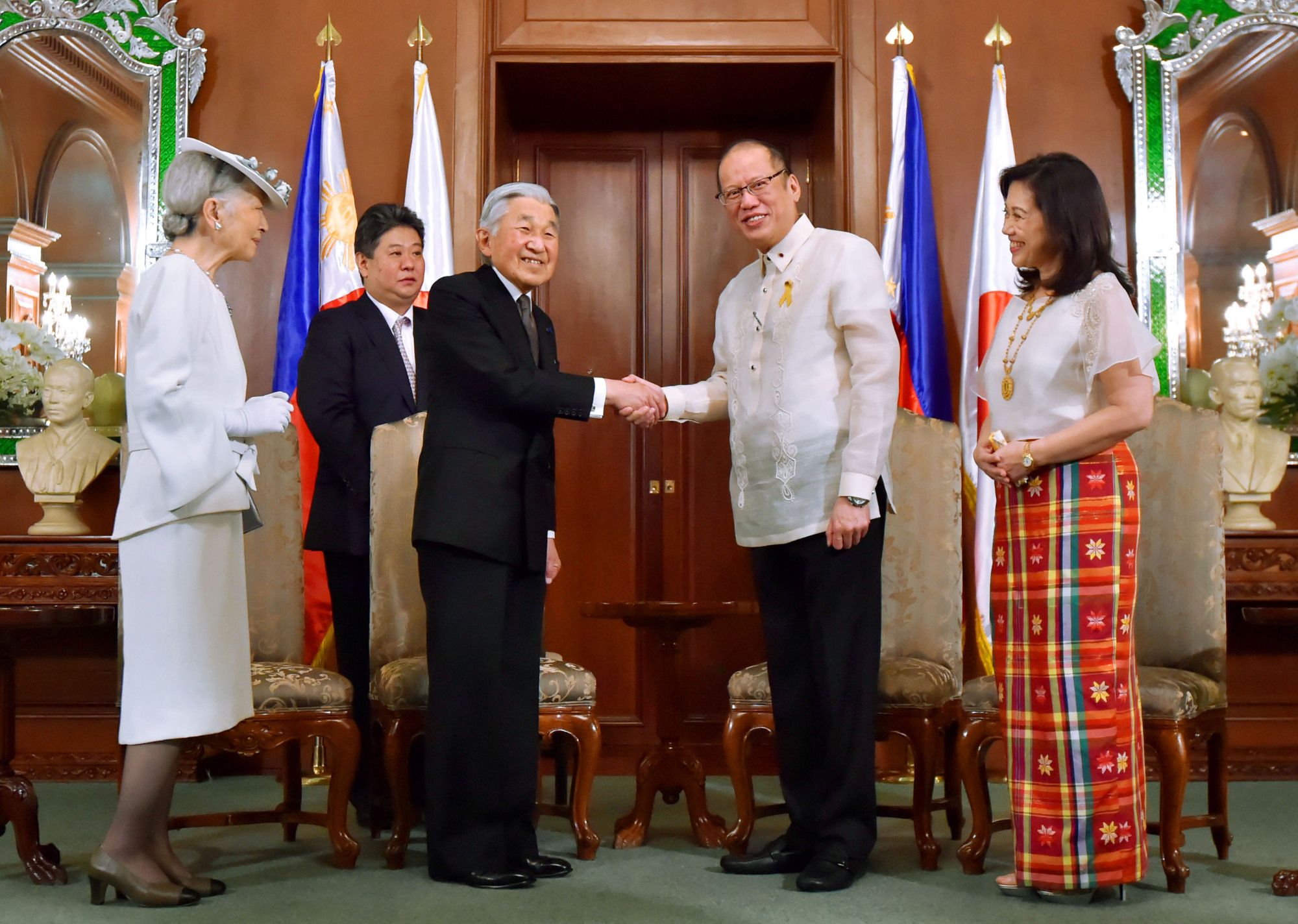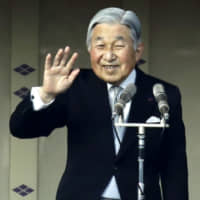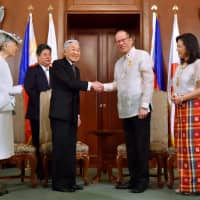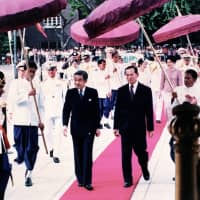Emperor Akihito marked the 30th year of his reign on Jan. 7, and the government will be holding a ceremony on Sunday to celebrate this milestone. On April 30, after three decades on the throne, the Emperor will be the first living Japanese monarch in about 200 years to step down.
As the eldest son of the late Emperor Hirohito, posthumously known as Emperor Showa, Emperor Akihito was born in Tokyo on Dec. 23, 1933. He studied at Gakushuin Primary School, but as World War II intensified, he was evacuated to Tochigi Prefecture.
After Japan’s defeat, he returned to Tokyo for school while learning English under the tutelage of Elizabeth Vining, an American author of children’s books.
In 1952, he entered Gakushuin University; the same year his coming-of-age ceremony and investiture as Crown Prince were conducted. The following year, the Emperor made his first overseas visit at age 19, touring 14 European countries, attending the coronation of Britain’s Queen Elizabeth and visiting the United States.
After finishing university in 1956, he started his official full-time duties. Three years later, he married Michiko Shoda, the daughter of the president of a flour milling company; their marriage was considered a symbol of a new, postwar Imperial family.
Upon the death of his 87-year-old father in 1989, he ascended the throne, becoming Emperor.
Emperor Akihito has since performed official duties such as convening Diet sessions, overseeing attestation ceremonies of new administrations, presenting honorary awards, accepting foreign ambassadors and ministers, and hosting banquets for visiting heads of state.
“Ever since ascending to the throne, I have spent my days searching for what should be the role of the emperor, who is designated to be the symbol of the state by the Constitution. I intend to carry out my duties in that capacity and continue to contemplate this question as I perform my day-to-day duties until the day of my abdication,” he said in remarks released ahead of his 85th birthday.
Annually, the Imperial Couple has made at least three domestic trips to attend festivals, as well as welfare, cultural or industrial facilities to encourage local residents.
Promoting international friendship has been another important duty for the Emperor, as he and the Empress have visited other countries to meet heads of state and their communities. Since ascending the throne, the Imperial Couple has officially visited 28 countries, their trips separated from immediate profits to the nation.
“His majesty’s visits overseas are completely different from those made by prime ministers,” said one of his close aides. “Rather than securing short-term gains, they are aimed at goodwill between countries, which will be evaluated over the long course of history.”
During his stay in Britain in 1953, he visited such places as a hospital, factories and a newspaper publisher. When he visited universities, he dined with professors and students.
As a symbol of the state, the Emperor has shown his diligence in meeting people both at home and abroad.
Upon his accession to the throne in 1989, the Emperor emphasized the great significance of exchanges between people, a stance he has since maintained.
“His stance to learn about the history and society of a country he visits and to sincerely respond to people he meets has not changed since his years as a crown prince,” his former aide said.
In his birthday remarks, noting that 2018 marked 150 years since the beginning of Japanese emigration overseas, the Emperor spoke of foreign nationals working in Japan: “When the Empress and I visited the Philippines and Vietnam, we met individuals who were making efforts toward their goals of one day working in Japan. Bearing in mind that people of Japanese ancestry are living as active members of society with the help of the people in their respective countries, I hope that the Japanese people will be able to warmly welcome as members of our society those who come to Japan to work here. … At the same time, the number of international visitors to Japan is increasing every year. It is my hope that these visitors will see Japan with their own eyes and deepen their understanding of our country, and that goodwill and friendship will be promoted between Japan and other countries.”
This article was compiled from Kyodo News articles, staff reports and the website of the Imperial Household Agency.
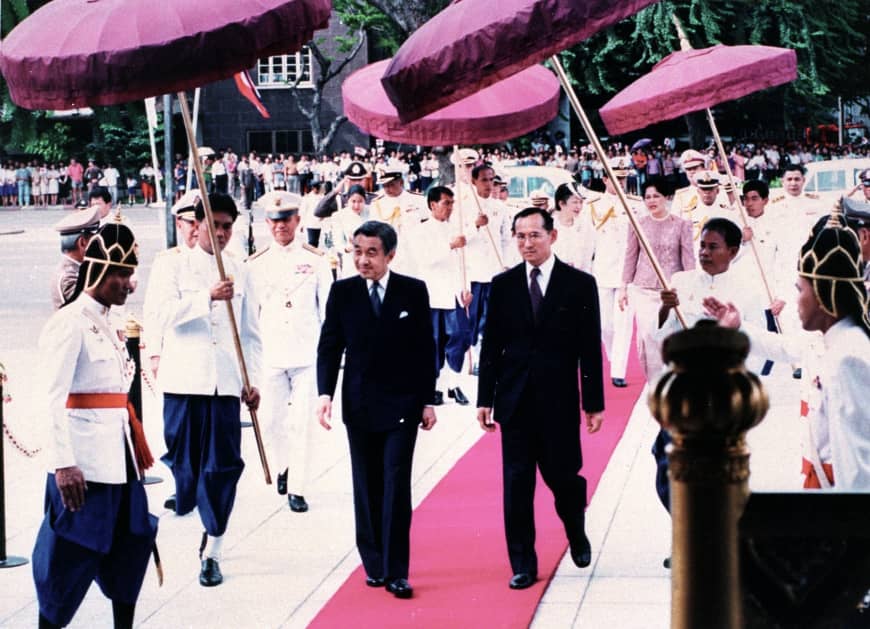
Chronology of major events related to Emperor Akihito
The following is a timeline of Emperor Akihito’s life and major events that have occurred throughout it.
Dec. 23, 1933 — Born the eldest son of Emperor Hirohito and Empress Nagako, posthumously known as Emperor Showa and Empress Kojun.
September 1939 — World War II begins.
Aug. 15, 1945 — Emperor Hirohito’s radio broadcast informing the nation of Japan’s surrender.
Nov. 10, 1952 — Becomes Crown Prince.
April 10, 1959 — Marries Michiko Shoda, becoming the first crown prince, and later the first emperor, to marry a commoner.
Feb. 23, 1960 — First son, later to become Crown Prince Naruhito, is born.
Nov. 30, 1965 — Second son, later known as Prince Fumihito, is born.
April 18, 1969 — Daughter, later known as Princess Sayako, is born.
Jan. 7, 1989 — Ascends the throne upon the death of Emperor Showa.
July-August 1995 — Visits memorial sites in Nagasaki, Hiroshima, Okinawa and Tokyo on the 50th anniversary of the end of World War II.
Jan. 18, 2003 — Undergoes surgery to remove cancerous prostate gland.
June 27-28, 2005 — Visits Saipan to honor the souls of war dead on the 60th anniversary of the end of World War II.
Feb. 18, 2012 — Undergoes heart bypass surgery.
April 8-9, 2015 — Visits Palau to pay tribute to war dead on the 70th anniversary of the end of World War II.
Aug. 8, 2016 — Releases video message expressing desire to abdicate and pass the throne on to Crown Prince Naruhito.
Dec. 23, 2018 — Celebrates 85th birthday.
Download the PDF of this The Emperor’s 30-year Anniversary Special



